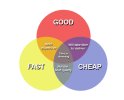k9medic
Line Up and Wait
- Joined
- Sep 27, 2018
- Messages
- 888
- Display Name
Display name:
ATP-H, CMEL, CSEL, CFI/CFII Airplanes and Helicopters
After 25 years of flying, I oddly find myself possibly in need of an MEI rating.
Despite the fact that I have my own 310, I am not willing to start pulling engines in it for a checkride.
Any suggestions on where to get a cheap and fast MEI rating?
I am located in Florida, but can travel if needed.
Sent from my iPhone using Tapatalk
Despite the fact that I have my own 310, I am not willing to start pulling engines in it for a checkride.
Any suggestions on where to get a cheap and fast MEI rating?
I am located in Florida, but can travel if needed.
Sent from my iPhone using Tapatalk

